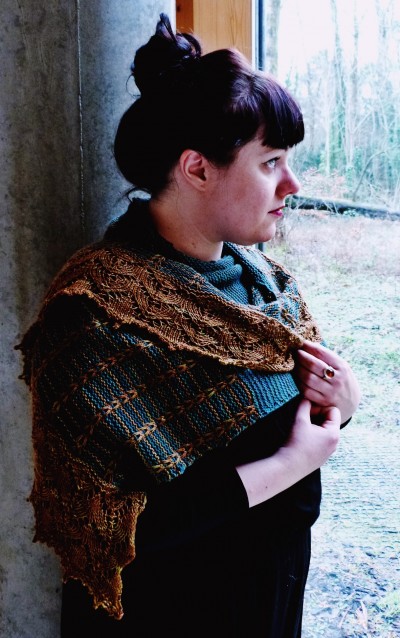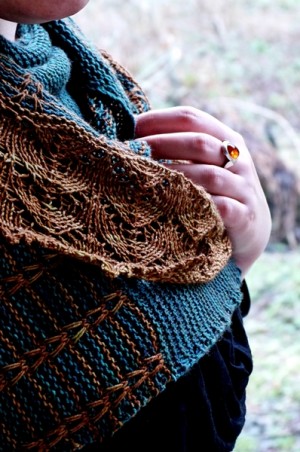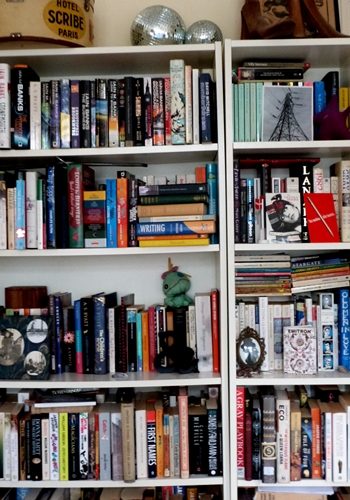I recently finished reading Alice Mattison’s The Kite & The String. It is ostensibly about creative writing, but even more about how to navigate murky creative waters as a woman. Many things resonated with me, though I mainly write non-fiction and technical instructions these days (leaving aside the behemoth of a novel I took up writing earlier this year as a non-work creative project). If you are one of those people who would like to design or are already working towards designing, you might want to grab a copy (even if it is not about knitting — more about that later).
One of the things I really liked about the book was Alice Mattison’s practical approach.
I hear a lot of people saying that they don’t have enough time to design and “if only XYZ would happen, then I would ..” She neatly dismantles that inner voice by pointing out that only a very small number of people will ever have that kind of privilege of having time to devote days or weeks to pursue a creative notion without interruption, child-rearing, house-keeping, bill-paying and so forth. She then says something that is so important that I am going to put it in bold: because you don’t have that privilege, it is vital that you share your ideas. We cannot have art and culture produced only by that tiny handful of people who have the luxury of time.
In other words, we need to make time in order to make.
I’m not going to give away everything, but Mattison is both sensible and radical when she suggest reassessing what creativity means to you and how you need to carve out your creative time. You may think I am one of the privileged few because I design knitting patterns for a living, but my creative time is maybe 10% of my job. Mattison’s book is a reminder that I need quiet time away from emails and packing slips — or I simply won’t create.
Earlier this year I feared that I would never design again, that the well had dried out. I tried writing and had no words. It felt absolutely terrifying. I was staring at sheets of blank paper and I had nothing. That is when I began writing my novel (the one that no one will ever read). You may ask how I ended up with 80K of fiction when I could not write 100 words of non-fiction. I do not know. Mattison suggests letting playfulness into your work, making stuff without defensiveness. I do not know if that is what I did, but I am happy to be back designing (on a related note, thank you for loving Vinterskov as much as me).
One part of Mattison’s book that really floored me was its chapter on silence. I began reading the chapter thinking it was going to deal with narrative silence and how to use that in prose. No. Alice Mattison addresses the silence of women. The chapter is a tough and painful read (and far, far too topical) — not only because she discusses how the voices of women writers have been silenced for a very long time but also because Mattison writes about how women self-censor ourselves. We silence ourselves, because we have been conditioned to believe our voices are not important.
I self-censor when I design. I talk myself out of a lot of ideas because I don’t think they are good enough or important enough. I nearly did not write this blog post. I meet a lot of women who talk their own creative pursuits down, who do not think their creative impulses merit two hours of quiet time every second Saturday morning.
And we all know that while knitting is amazing, fun, worthwhile, and full of wonders — we have to have that discussion every time someone discovers we are knitters. And I think it is rooted in the perception of it being women’s work (just like we have women’s fiction that isn’t real literature, and teen girls don’t like real music).
Sorry, where was I?
Ah, yes. That chapter on silence in Mattison’s book is worth its weight in gold, if you identify as a woman and you’ve ever talked yourself out of something.
So, I went to Denmark and I read Mattison’s book and I released a pattern. That brings me to my last point.
I started out by saying “If you are one of those people who would like to design or are already working towards designing, you might want to grab a copy (even if it is not about knitting)". I am a big believer in seeking inspiration outside the obvious places. I’m someone who designed collections based on land art, Mesolithic archaeology, psychogeograhy and 15th C printing, so I would say that.
But it is important.
I always say “you do you” because we cannot be anybody but ourselves — including in knitting design. I found Alice Mattison’s book incredibly useful (and there is an invaluable chapter on publishing too) because it dealt with a general sense of creativity within a specialised field. I related to so, so much but it also gave me an outside perspective because it did not deal with knitting.
Read broadly and wisely. Find your own path. Mine your own ores. Discover what matters to you and articulate that through your knitting, your making and your creativity. Make pockets of time (and make them count). Believe your own voice should be heard. And go forth and be brilliant.



 After a few teasing posts, I am happy to say that the Byatt shawl is now
After a few teasing posts, I am happy to say that the Byatt shawl is now 
 I gave away about 80% of my books when I left Denmark and I can still see ghosts on the shelves, though I merged my collection with Dave's when we started living together. So many books.
I gave away about 80% of my books when I left Denmark and I can still see ghosts on the shelves, though I merged my collection with Dave's when we started living together. So many books.